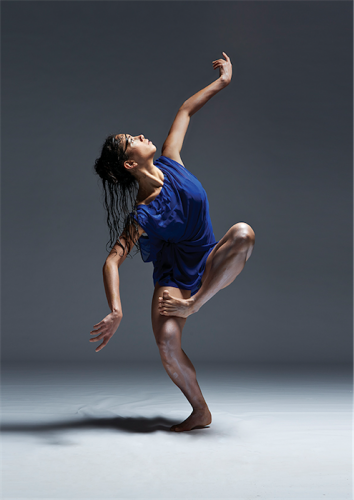How do artistic director Stephen Page and his composer brother, David, keep coming up with such original works so quickly?
One of Stephen’s tricks is by cleverly giving the following year’s work a generic title – in this case “Lore” – allowing time for them to decide what they really want to do.

Nicola Sabatino in Bangarra Dance Theatre’s “Lore”… “Dance is a fire that gets wakened.” Photo by Edward Mulvihill
Equally significant is that Stephen has consistently employed new choreographers, most of them from the ranks of Bangarra.
For instance, this year, choreographer and former Bangarra dancer Frances Rings returns to the company with “Sheoak”, a tribute to the ageless Casuarina tree and a comment on the challenges facing Aboriginal and Torres Strait Islander communities today.
But Rings is by now a veteran choreographer, so Page has ensured that the tradition continues by having two new choreographers step up from the company, as Waangenga Blanco and Deborah Brown create a contemporary dance work around the Torres Strait convenience store, I.B.I.S.
Seven of the company’s 16 dancers have Torres Strait Islander heritage, including Blanco and Brown.
I’m talking to two dancers, Nicola Sabatino and Kaine Sultan-Babij, with vastly different heritages.
Sabatino was raised in Weipa, in Far North Queensland, but is a descendant of the Kaurareg and Meriam peoples of the Torres Strait Islands.
“When I was a kid in Weipa I was a bit disconnected from my mob, but there was a lot of dancing,” she tells me.
Her later formal training was grounded in ballet, where she found a change of bodily focus. But, she says: “I’m a big believer in cultural memory in the body and having a kind of the genetic thing that comes naturally… dance is a fire that gets wakened.”
Torres Strait dance movements, she says, are inspired by birds and the sense of taking off, so it’s amusing that the new work is called “I.B.I.S.”, even though actually I.B.I.S. is the cooler where women gather in the hot weather. And the dance is concerned not with flight but with issues such as global warming.
Kaine Sultan-Babij’s background is strikingly different. His name bears witness to his Afghan cameleer ancestry, but he also inherited Croatian and Aboriginal culture.
Sultan-Babij talks of the sheoak tree and its potential for dance.
“Choreographically, we tried to visualise the roots, tree trunks and the branches,” he says.
“Sheoaks have a lot of significance in Aboriginal culture… you cut them, you can get medicine from them. The patterns of the bark can be painted on, that sort of thing.
“We found the characteristics of the sheoak and related them to ourselves and our bodies.
“Some of these trees are also a very old trees, so no wonder it’s called the grandmother tree.”
“Lore,” Bangarra Dance Theatre at Canberra Theatre Centre July, 9-11, bookings to canberratheatrecentre.com.au or 6275 2700. Pre-show forum (with “CityNews” arts editor Helen Musa), 6.30pm, Thursday, July 9. Parliament House talk with Stephen Page and creatives, 2pm, Sunday, July 5.
The post Arts / Turning old into new dance appeared first on Canberra CityNews.
